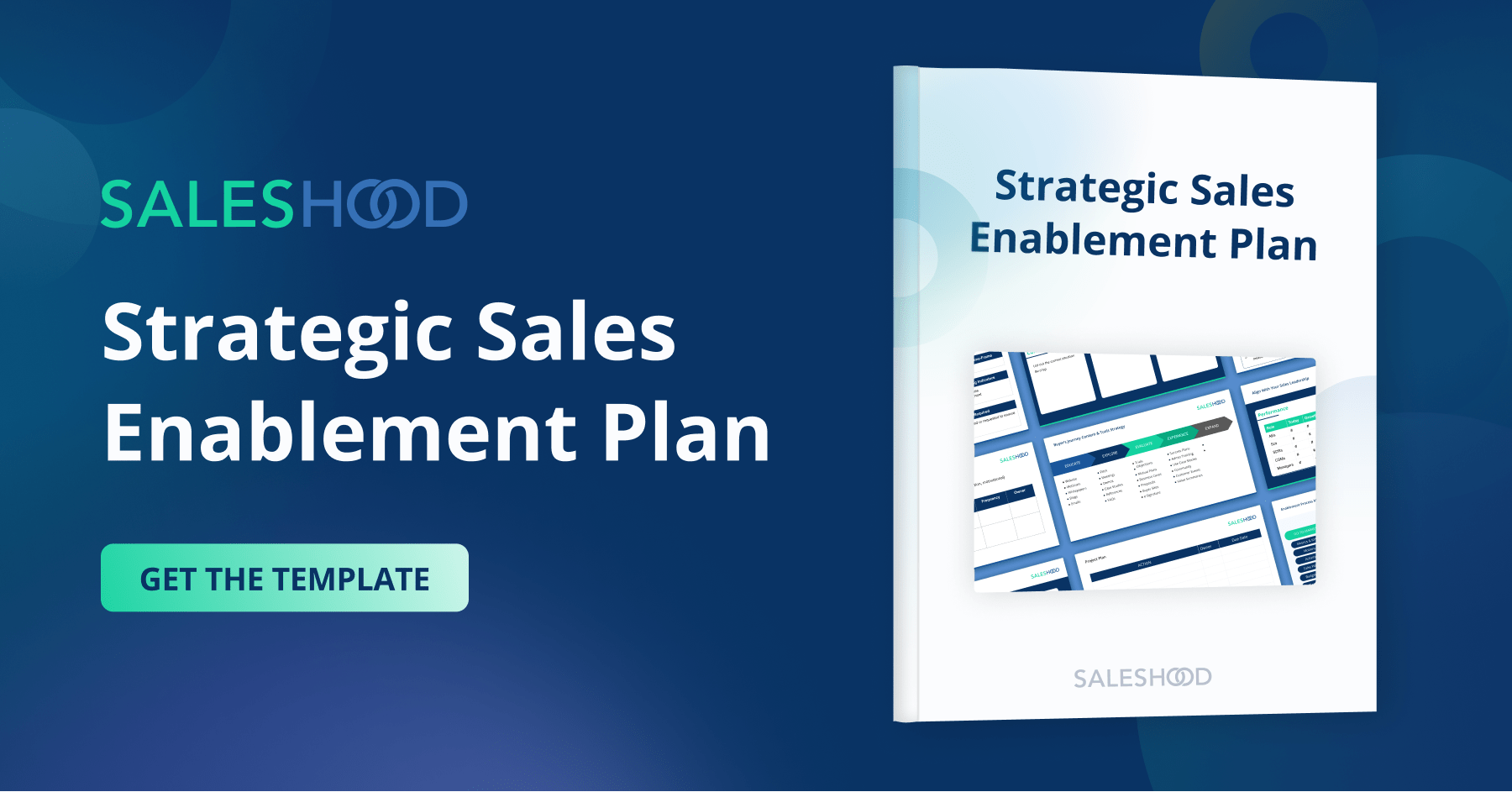Creating and sustaining organizational buy-in for our sales enablement initiatives is complex. Being the catalyst of change for new ideas in an organization comes with great benefits and lots of hard work.
New ideas for our organizational buy-in initiatives vary from a new sales process, to a new sales training curriculum, to investing in a new executive briefing center, to hiring sales coaches, to growing the enablement team, to moving training center locations and more. These are all real life examples of new ideas that I pursued and successfully got funded and implemented during my tenure at Salesforce. As enablement leaders, our roles and impact are so wide, we influence and lead many strategic initiatives.
Uncovering problems to solve, champion, secure organizational buy-in is not for everyone. The political savviness required to make happen is very high. We need to know how to communicate the vision of the idea without upsetting people who may already be very married to the status quo. We need to build a business case with our executive sponsors, advocates, and naysayers. We need to know how to engage with all stakeholders including the naysayers. The naysayer skeptics are the ones we have to win-over before an idea gets squashed. They have to feel like they have a say in our new ideas too. They are critical for organizational buy-in.
In his book Buy-In, Harvard Business School Professor John Kotter explains the importance of gaining others’ support in order to create real institutional change:
“Buy-in is critical to making any large organizational change happen. Unless you win support for your ideas, from people at all levels of your organization, big ideas never seem to take hold or have the impact you want. Our research has shown that 70% of all organizational change efforts fail, and one reason for this is executives simply don’t get enough buy-in, from enough people, for their initiatives and ideas.”
Here are five tactics to creating and sustaining organizational buy-in for our sales enablement initiatives:
- Document a vision statement
- Create authentic and diverse advocacy
- Build the business case
- Communicate frequently
- Staying the course
Being a catalyst of change requires a vision and persistence to create organizational buy-in. These tips worked for me and they are also being used by many enablement practitioners today.
Document A Vision Statement
First, start by isolating the problem and documenting a clear concise (and draft) vision statement. Write a vision statement, Keep it draft form. Be clear on the problem. The purpose of the vision statement is to begin to socialize the idea with stakeholders. Putting a vision statement on a slide or in a document is a very important step. It says that you are serious and that you have put some thought into the idea. It also shows that you are asking for collaboration and help. To get our enablement initiatives budgeted and prioritized we will need to first win over the Chief Revenue Officer or Vice President Sales and the Vice President Sales Operations too.
Create Advocacy
Then, once you have some executive level support for the “draft” vision, assemble a cross-departmental team. Set up an advisory committee. Kotter calls this step in the process “inviting in the lions.” Look for a diverse set of opinions and people who will have objections. We need to take a genuine interest in the opinions of our stakeholders and not come to the discussion invested in a particular outcome.
Build the Business Case
The committee should be set up to discuss and debate issues. Together, the committee will build a well balanced business case justification. The business case should include cost-benefit analysis. The committee should all be behind the business case. Here is a blog on metrics that matter to help build the financial justification for sales enablement initiatives.
Communicate Frequently
Communication needs to be frequent and very clear. A constant drumbeat of communications is critical to keep momentum going. A regular weekly update is a very smart tactic summarizing progress and next steps.
Stay the Course
Finally, we need to avoid the new shiny penny syndrome and stay the course. Do this by carrying the initiative across the finish line. Many organizational wide initiatives because there is not a champion owning the last mile. I was having lunch with Laurie Schrager, Vice President Sales Operations at Tealium and she commented that enablement professionals are successful because they do “full swing program execution” meaning they carry all initiatives across the finish line and ensure the work is done to plan.
Good luck executive your sales enablement initiatives and creating organizational buy-in.



